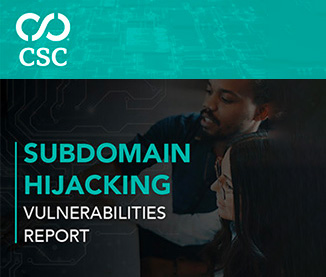

Brand Protection |
Sponsored by |

|



 Apple's Wordwide Developers Conference may have just ended, but already, the conference release of Mac's OS X 10.6 — a beta build previewed for developers — has been leaked onto torrent sites. It borders on irony: for years, Mac lovers have touted the superior security of the Mac operating system over Windows, but earlier this year, it was torrent sites — the very sites where OS X 10.6 is now being freely copied — that caused more than 25,000 Mac users to fall victim to the iServices Trojan. Some Macs never learn. more
Apple's Wordwide Developers Conference may have just ended, but already, the conference release of Mac's OS X 10.6 — a beta build previewed for developers — has been leaked onto torrent sites. It borders on irony: for years, Mac lovers have touted the superior security of the Mac operating system over Windows, but earlier this year, it was torrent sites — the very sites where OS X 10.6 is now being freely copied — that caused more than 25,000 Mac users to fall victim to the iServices Trojan. Some Macs never learn. more
 Like many in the UK communications industry my colleagues and I at Entanet have been eagerly awaiting the Digital Britain report. Darren Farnden, Entanet's Head of Marketing, has posted an interesting assessment of key parts of the report at opinion.enta.net. Given the content of Darren's article I thought it would be useful to post it in full here for CircleID readers... more
Like many in the UK communications industry my colleagues and I at Entanet have been eagerly awaiting the Digital Britain report. Darren Farnden, Entanet's Head of Marketing, has posted an interesting assessment of key parts of the report at opinion.enta.net. Given the content of Darren's article I thought it would be useful to post it in full here for CircleID readers... more
 A very good friend of mine is an archivist with the Ontario government, and we share similar views on how technology is impacting modern life. He passed a really interesting item along that ran in yesterday's Washington Post. Some of you may be following this – Google's Book Search Settlement. I can definitely see how this has a direct bearing on the archive space, but also how it touches on a few tangents of my world – emerging communications technologies. more
A very good friend of mine is an archivist with the Ontario government, and we share similar views on how technology is impacting modern life. He passed a really interesting item along that ran in yesterday's Washington Post. Some of you may be following this – Google's Book Search Settlement. I can definitely see how this has a direct bearing on the archive space, but also how it touches on a few tangents of my world – emerging communications technologies. more
 My friend Kevin Thompson over at Cyberlaw Central reminded me this morning in this post that President Clinton signed the Digital Millennium Copyright Act ten years ago today. Tempus fugit. It's interesting to reflect on how this critical piece of legislation has affected (I think fostered) the growth of the online infrastructure with its safe harbor provisions found at 17 U.S.C. 512. more
My friend Kevin Thompson over at Cyberlaw Central reminded me this morning in this post that President Clinton signed the Digital Millennium Copyright Act ten years ago today. Tempus fugit. It's interesting to reflect on how this critical piece of legislation has affected (I think fostered) the growth of the online infrastructure with its safe harbor provisions found at 17 U.S.C. 512. more
 A couple of years ago I started a mailing list where folks not necessarily involved with the vetted, trusted, closed and snobbish circles of cyber crime fighting (some founded by me) could share information and be informed of threats. In this post I explore some of the history behind information sharing online, and explain the concept behind the botnets mailing list... we may not be able to always share our resources, but it is time to change the tide of the cyber crime war, and strategize. One of the strategies we need to use, or at least try, is public information sharing of "lesser evils" already in the public domain. more
A couple of years ago I started a mailing list where folks not necessarily involved with the vetted, trusted, closed and snobbish circles of cyber crime fighting (some founded by me) could share information and be informed of threats. In this post I explore some of the history behind information sharing online, and explain the concept behind the botnets mailing list... we may not be able to always share our resources, but it is time to change the tide of the cyber crime war, and strategize. One of the strategies we need to use, or at least try, is public information sharing of "lesser evils" already in the public domain. more
 What do iTunes and a cooperative domain-name Intellectual Property (IP) regime have in common? They are market solutions to illegal activity: free downloading of music and free use of brands in domain names, respectively. The music industry tried to fight the free downloading of copyright-protected music by taking legal action against free downloaders under the pretext that their activity siphons industry revenue... more
What do iTunes and a cooperative domain-name Intellectual Property (IP) regime have in common? They are market solutions to illegal activity: free downloading of music and free use of brands in domain names, respectively. The music industry tried to fight the free downloading of copyright-protected music by taking legal action against free downloaders under the pretext that their activity siphons industry revenue... more
 In all the recent uproar (New York Times, "Google Told to Turn Over User Data of YouTube," Michael Helft, 4 July 2008) about the fact that Google has been forced to turn over a large pile of personally-identifiable information to Viacom as part of a copyright dispute (Opinion), there is a really interesting angle pointed out by Dan Brickley (co-creator of FOAF and general Semantic Web troublemaker)... more
In all the recent uproar (New York Times, "Google Told to Turn Over User Data of YouTube," Michael Helft, 4 July 2008) about the fact that Google has been forced to turn over a large pile of personally-identifiable information to Viacom as part of a copyright dispute (Opinion), there is a really interesting angle pointed out by Dan Brickley (co-creator of FOAF and general Semantic Web troublemaker)... more
The following is based on my experience and interpretation of the UDRP and the relevant laws of the United Kingdom and European Union. This is not legal advice but just my own experience and interpretation. How does a UK citizen create a non-commercial trademark.tld parody criticism website and avoid harassment from the trademark holder? Here are the steps... more
ICANN will open applications for new top-level domains in April 2026, offering brands a rare chance to secure custom domain names to enhance trust, marketing flexibility, and long-term online security. more
 As artificial intelligence reshapes how users navigate the web, domain names may undergo explosive growth, potentially reaching tens of billions. A new infrastructure of trusted digital identities could become essential for AI agents. more
As artificial intelligence reshapes how users navigate the web, domain names may undergo explosive growth, potentially reaching tens of billions. A new infrastructure of trusted digital identities could become essential for AI agents. more
 Many previous pieces of research have focused on the desirability of a comprehensive scoring system, to be used for ranking results identified as part of a brand-protection solution, according to their potential level of threat. Such scoring systems offer the capability for identifying prioritised targets for further analysis, content tracking or enforcement actions. more
Many previous pieces of research have focused on the desirability of a comprehensive scoring system, to be used for ranking results identified as part of a brand-protection solution, according to their potential level of threat. Such scoring systems offer the capability for identifying prioritised targets for further analysis, content tracking or enforcement actions. more
 The ability to rank results according to the level of threat they pose (based on factors such as, for example, the extent to which a webpage relates to a brand of interest) is a key component of many brand protection services. The prioritisation process has a number of purposes, including the identification of: (a) priority targets for further analysis; (b) candidates for content tracking (i.e. regular reinspection of content or configuration, and the generation of an alert if high-concern findings are identified) - as may be appropriate in cases where a domain name presents a high potential level of risk but is not currently associated with any live site content; and (c) priority targets for enforcement actions. more
The ability to rank results according to the level of threat they pose (based on factors such as, for example, the extent to which a webpage relates to a brand of interest) is a key component of many brand protection services. The prioritisation process has a number of purposes, including the identification of: (a) priority targets for further analysis; (b) candidates for content tracking (i.e. regular reinspection of content or configuration, and the generation of an alert if high-concern findings are identified) - as may be appropriate in cases where a domain name presents a high potential level of risk but is not currently associated with any live site content; and (c) priority targets for enforcement actions. more
 When major events like the Super Bowl are on the horizon, cybercriminals exploit public trust by creating fraudulent domains for fake betting sites, phishing, and malware distribution. CSC's research into top online sportsbooks highlights the hidden risks of dormant domains, which, though inactive, can quickly be repurposed for cyber attacks. Overlooked yet dangerous, these domains play a key role in impersonation, misinformation, and scams targeting event-driven traffic, underscoring the need for continuous monitoring of lookalike, dropped, re-registered, and newly registered domains. more
When major events like the Super Bowl are on the horizon, cybercriminals exploit public trust by creating fraudulent domains for fake betting sites, phishing, and malware distribution. CSC's research into top online sportsbooks highlights the hidden risks of dormant domains, which, though inactive, can quickly be repurposed for cyber attacks. Overlooked yet dangerous, these domains play a key role in impersonation, misinformation, and scams targeting event-driven traffic, underscoring the need for continuous monitoring of lookalike, dropped, re-registered, and newly registered domains. more
 One major element of many brand-protection programmes is the use of an algorithm to sort the findings identified through monitoring, according to their relevance or level of potential threat. This prioritisation process offers a number of benefits, including the identification of priority targets for further analysis, content tracking, or enforcement. more
One major element of many brand-protection programmes is the use of an algorithm to sort the findings identified through monitoring, according to their relevance or level of potential threat. This prioritisation process offers a number of benefits, including the identification of priority targets for further analysis, content tracking, or enforcement. more
 As counterfeit networks grow more elusive, AI-driven clustering could revolutionize brand protection. By linking disparate findings, identifying serial infringers, and enabling bulk enforcement, AI offers a smarter approach to monitoring and takedown efforts. Yet, challenges remain - from data reliability to analyzing complex content. Companies that master AI-driven clustering may gain a significant advantage in the fight against brand abuse. more
As counterfeit networks grow more elusive, AI-driven clustering could revolutionize brand protection. By linking disparate findings, identifying serial infringers, and enabling bulk enforcement, AI offers a smarter approach to monitoring and takedown efforts. Yet, challenges remain - from data reliability to analyzing complex content. Companies that master AI-driven clustering may gain a significant advantage in the fight against brand abuse. more